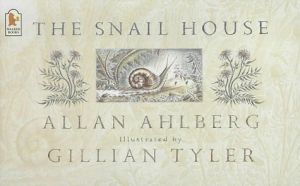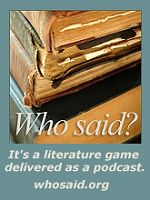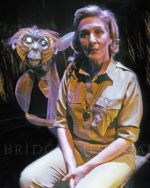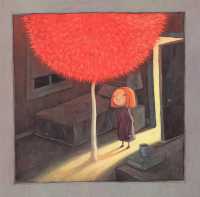The Stop Laughing This Is Serious Gallery in Blackheath ran a great exhibition of puppetry-related works during One Van, which I hope to get around to blogging about sooner or later. But they also had a small but interesting range of books, and I have been kicking myself for not buying one called ‘The Snail House’, by Allan Ahlberg, as its not generally available in bookshops here.
I’ve always loved Ahlberg’s picture books (‘Peepo!’, ‘The Jolly Postman’, ‘Each Peach Pear Plum’, (all illustrated by Janet Ahlberg, his wife) and ‘Mrs Plug the Plumber’ were favourites in our house), so ‘The Snail House’ caught my attention anyway, but its an absolutely beautiful picture book. Its about a grandmother telling her grandchildren a story about how they shrink until they are small enough to go travelling in the house on a snail’s back, and the adventures
they have.

Its charming in so many ways. The adventures are everyday, and yet exciting; for example, an apple falls next to them and it seems like an earthquake or bomb. It has all the joys of contemplating life in different scales and microcosms. The illustrations, by Gillian Tyler, are finely drawn and textured, with lovely soft muted colours, and I’m sure they have lots of secrets in them to spot, as Ahlberg books do. Most intriguing is the manner of the telling: its written so you can see the grandmother reacting and adjusting her story as the kids react imaginatively to what she is saying, just as it happens
in real life.
I like the humour, lightness, and modesty that comes across in interviews with Ahlberg, such as in this one with his readers, or when talking about his poetry (I hadn’t realized he had published verse). Penguin UK’s listing of him as one of their authors goes some way to describing the vitality and connection that must have existed both professionally and personally between him and his wife Janet, who illustrated many of the books. That ‘process of playing table tennis’ with ideas, jokes and visuals is a heady creative experience! Janet died in 1994, but it looks as if their daughter Jessica shares the family talent, as last year she illustrated her father’s book, ‘Half a Pig’.
Its interesting Janet and Allan Ahlberg are the subject of one of a series of books about famous people by Heinemann Library, along with others like Nelson Mandela, Mozart, Ford, and Disney.




 By all accounts the two-part 6 hour stage adaptation of Philip Pullman’s trilogy
By all accounts the two-part 6 hour stage adaptation of Philip Pullman’s trilogy 




